If you love the flavor of sourdough but don’t have time for long proofing times, I developed this sourdough discard bread recipe just for you!
When my family asks for bread at the last minute and I haven’t planned ahead (or I'm just short on time), this is the recipe I make. It’s perfect for busy weeks when I want a airy bread with a rich, tangy flavor but don't have time to make my favorite sourdough bread recipe.
Like my other discard bread recipes, this one captures everything I love about sourdough but is quick and easy. Let me show you how to do it in your own kitchen.
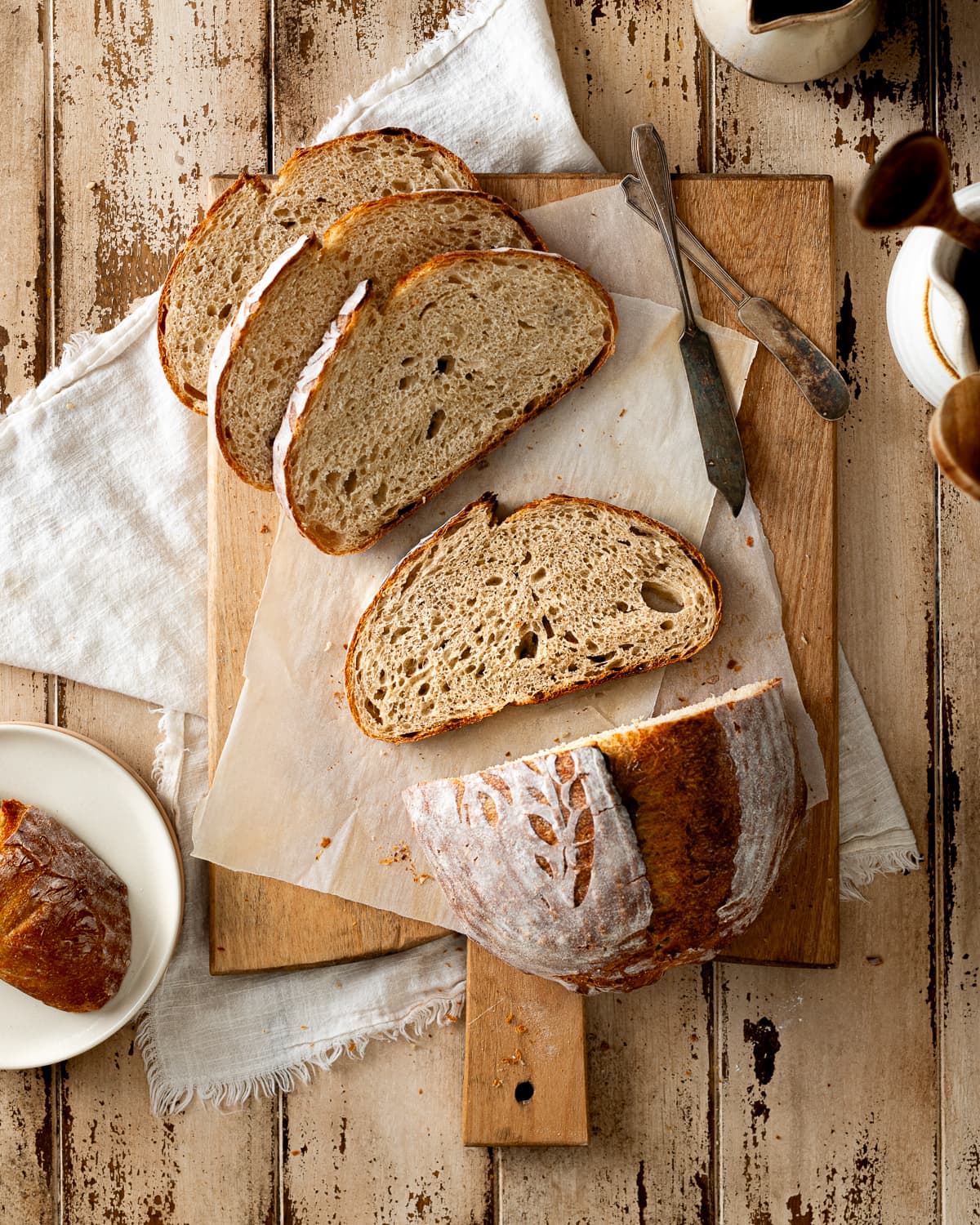
This recipe was originally published in Sept. 2023. I have since added more photos and tips for success.
5-STAR REVIEW
This was my first run through with this recipe and it turned out amazing! I love that this loaf yields a similar structure to a true sourdough loaf with a fraction of the time and effort. Will definitely make again.
Allison
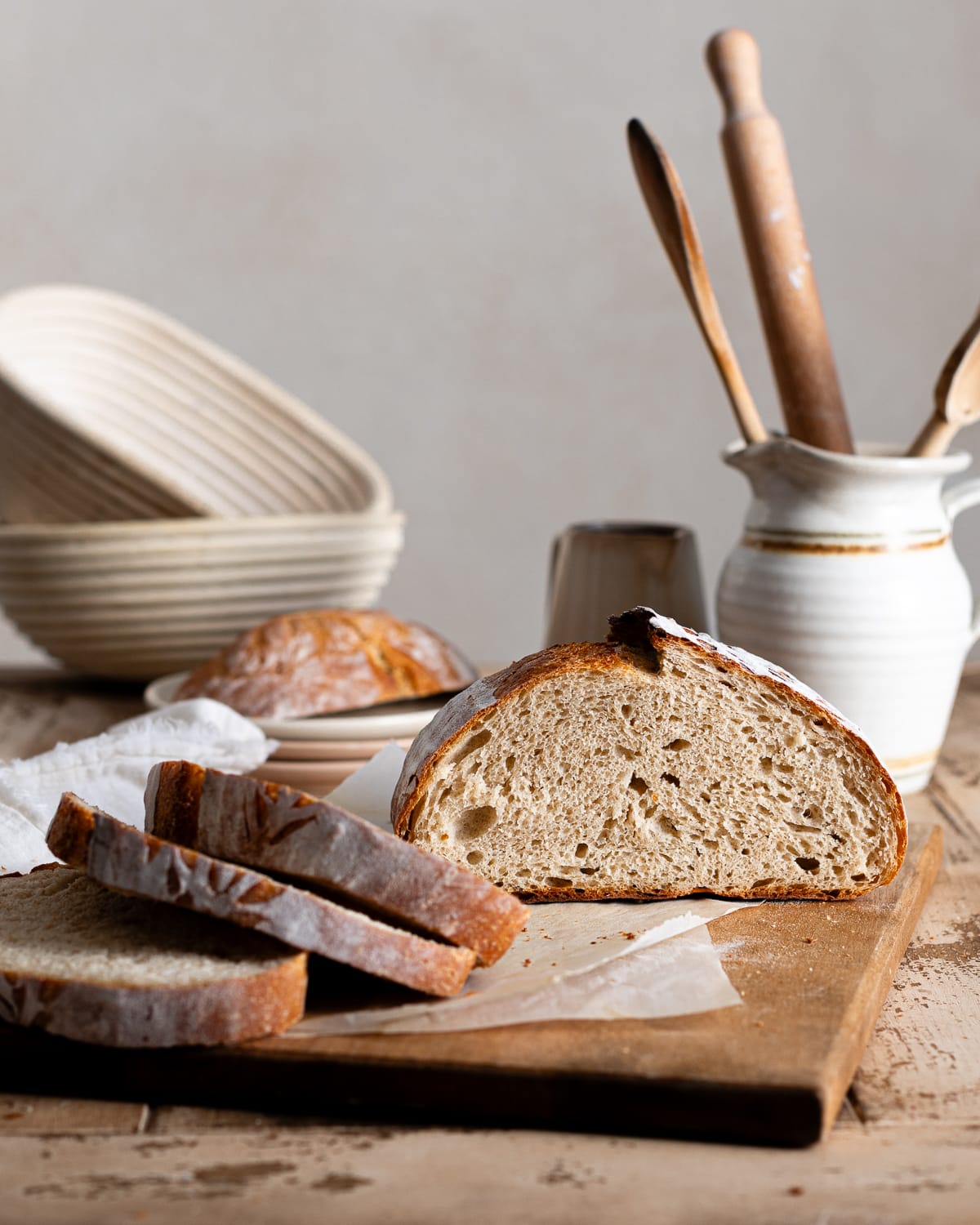
If you’ve seen my recipes for sourdough discard focaccia, sourdough discard pretzels, and sourdough discard sandwich bread, you’ll know how much I love the convenience of combining sourdough discard with commercial yeast. It’s the easiest way to get great flavor without the long rise times.
Ingredients and Substitutions
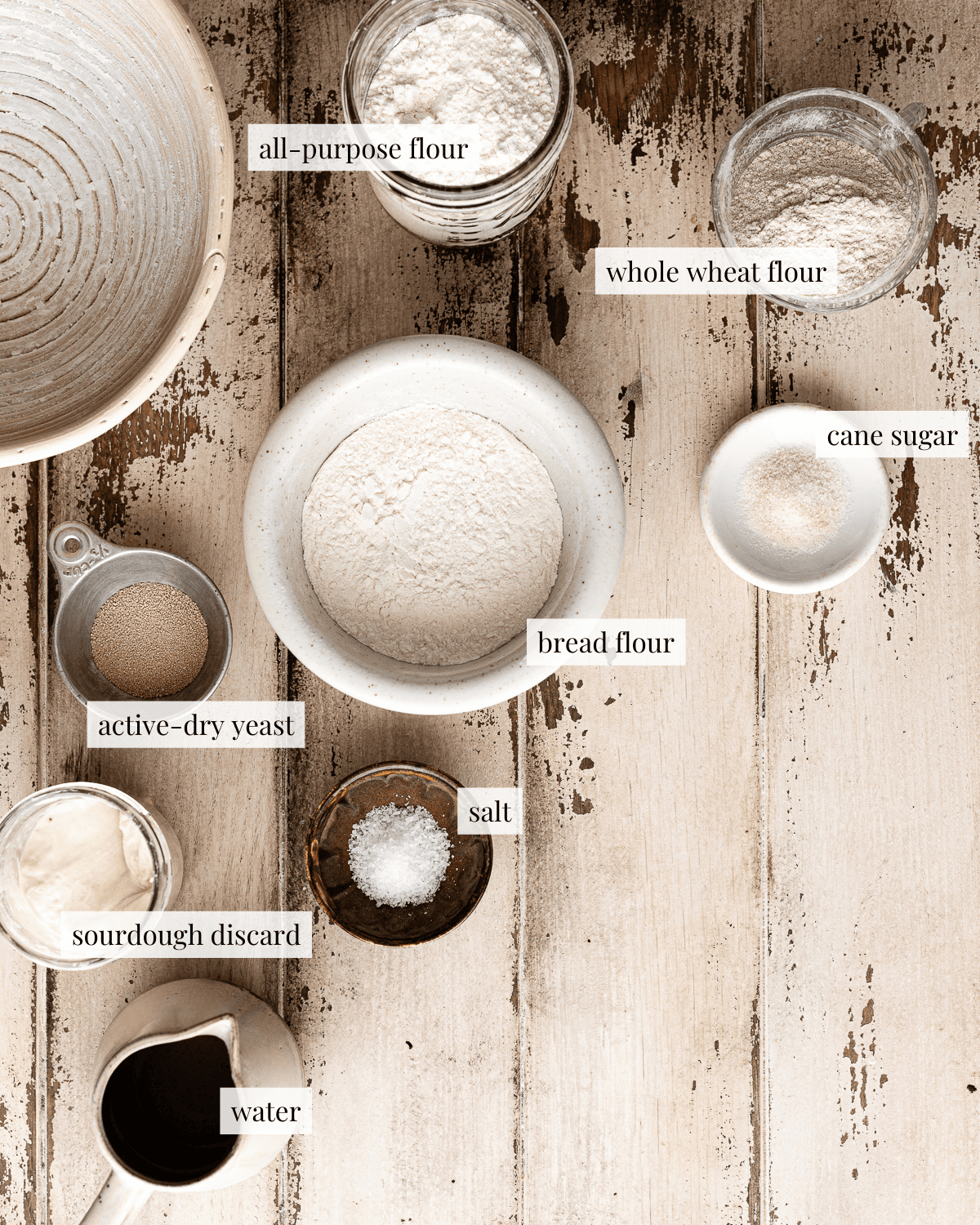
This recipe uses a mix of different types of flours, all-purpose flour, bread flour and whole wheat the ideal mix for flavor and texture. But if you don’t have all three on hand, no problem. You can use just all-purpose or bread flour and still get great results.
Since this recipe uses commercial yeast you can use your sourdough starter straight from the fridge, no need to activate it!
Step-by-step Instructions
STEP 1: Make the dough
Combine water, sugar and active-dry yeast, let the yeast bloom for 15 minutes. Add in the sourdough starter and dry ingredients. Mix until no traces of dry flour remain.

STEP 2: Stretch and fold
Perform 3 sets of stretch and folds in 15-minute intervals during bulk rise. To perform 1 set, use your fingertips pick up one side of the dough and stretch it as far as you can without tearing. Then fold the dough over itself, turn the bowl 90 degrees, and repeat 3 more times (this is one set).

Stretch and Fold Sample Schedule
9:00 a.m. - Fold 1
9:15 a.m. - Fold 2
9:30 a.m. - Fold 3
STEP 3: First rise
After the last fold, allow the dough to rise untouched until doubled in volume.

STEP 5: Bake
Score the dough. Bake in a covered Dutch oven at 475 F for 25 minutes. Remove the cover and bake at for an additional 10 to 15 minutes, depending on how dark you'd like your crust.
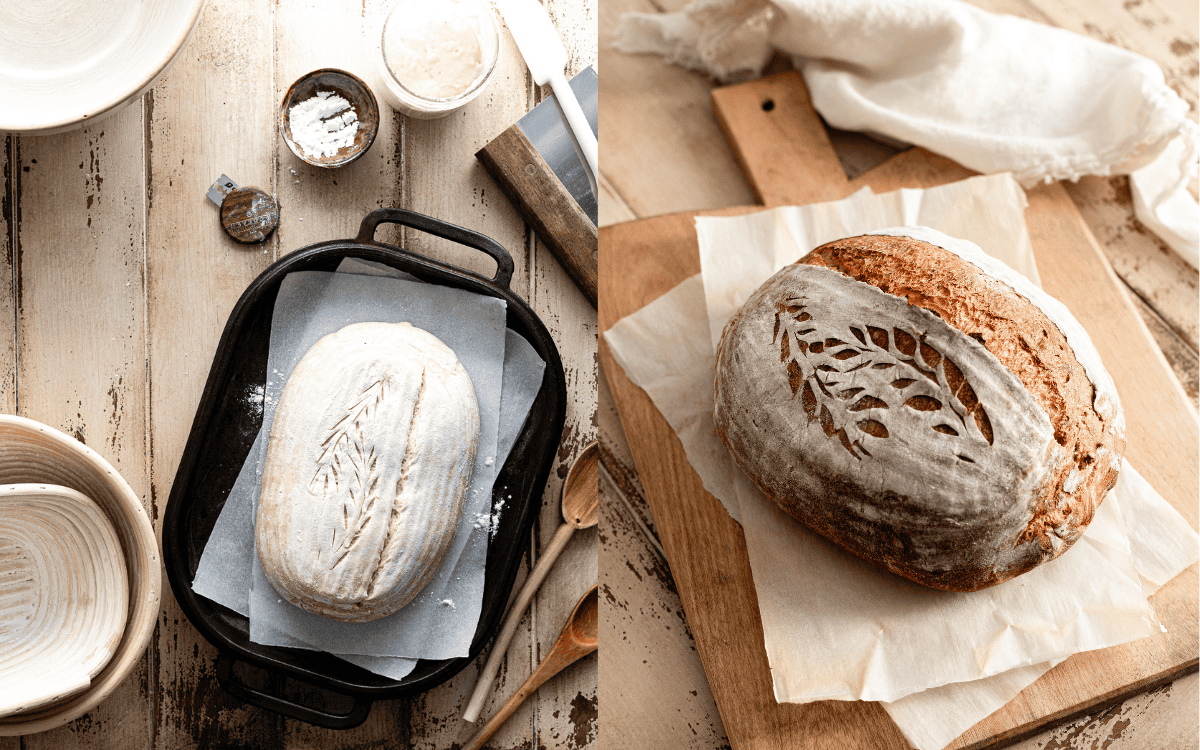
Tips from Hannah's test kitchen
- This dough contains a lot of water (about 73% hydration). It’s completely normal for your dough to feel very sticky and difficult to handle right after it’s mixed. Don't panic! Be gentle, use your fingertips during stretch and fold, and keep your hands damp to make it easier to handle.
- Although I love how yeast speeds things up, I had better results using cold water during testing. It slows down fermentation, but it gives the dough more time to develop flavor and the payoff is worth it.
- This bread works really well as a sandwich loaf too check out How to Bake Bread in a Loaf Pan in my post.

Want to learn how to create beautiful decorative scoring patterns on your bread? My sourdough bread scoring guide is a great place to start.
You may also like
Did this recipe rise to the occasion?
★★★★★
Please leave a star rating and a comment. Your feedback helps me create more delicious sourdough recipes. I read and truly appreciate every message.
Don't forget to PIN this recipe on Pinterest to save it for later!
Thank you for your support!
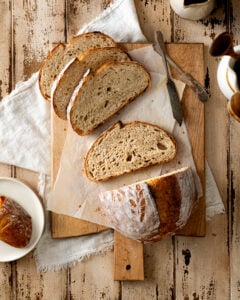
Easy Sourdough Discard Bread Recipe
This section may contain affiliate links
Ingredients
- 7 grams active-dry yeast
- 226 grams water
- 14 grams cane sugar
- 113 grams sourdough discard
- 180 grams bread flour
- 90 grams all-purpose flour
- 60 grams whole wheat flour
- 7 grams salt
Click US Customary to view volume measurements
Instructions
- Make the dough: Mix the water, active-dry yeast, and sugar in a mixing bowl. Allow the mixture to bloom until it smells yeasty and looks bubbly.7 grams active-dry yeast, 226 grams water, 14 grams cane sugar
- Fold in the sourdough discard, bread flour, all-purpose flour, whole wheat flour and salt until no traces of dry flour remain. Cover the bowl with plastic wrap and let the dough rest for 10 minutes.113 grams sourdough discard, 180 grams bread flour, 90 grams all-purpose flour, 60 grams whole wheat flour, 7 grams salt
- Stretch and fold: After the rest period, complete 3 sets of stretch and folds in 15-minute intervals.
- To complete a stretch and fold, with the dough inside your bowl, pick up the side of the dough closest to you using your fingertips. Stretch the dough out as much as you can without it tearing and fold it over itself. Turn the bowl 90 degrees and repeat 3 more times.
- Cover the bowl with plastic wrap. Set it in a warm place and let the dough rest for 15 minutes.
- First rise: Let the dough rise at room temperature until doubled in volume. The dough should double in volume and appear bubbly, about 10 to 15 minutes.
- Prep: Preheat the oven to 475 F with a Dutch oven inside.
- Shape: Coat a banneton with rice flour (see note*). Shape the dough into a boule or a batard.
- To shape your dough, turn the proofed dough on a clean work surface. Flatten the dough out into a rectangle. Fold the side closest to you towards the center and the top of the dough over the bottom flap. Fold the sides over each other
- Flip the dough and round it into a boule or roll it into a batard. Place the dough into a prepared banneton with the seam side up.
- Second rise: Cover the banneton with plastic wrap and let the dough rise until puffy and well risen, about 30 to 45 minutes.
- Score: Transfer the dough to a piece of parchment paper with the seam-side down. Score the dough.
- Bake: Place the dough with the parchment paper inside the hot Dutch oven. Bake the dough covered for 25 minutes and uncovered for 10 to 15 minutes.
- Enjoy: Transfer the baked loaf to a cooling rack. Let the bread cool for at least 2 hours before slicing.
- Store: This bread will store well for up to a week in an airtight container at room temperature.
Tips
These recipes were developed and tested using grams for precise measurements. To increase your chances of success, I recommend investing in a kitchen scale. I've included rough volume estimates (in tablespoons and cups), but they might not be totally accurate.
Remember all ovens are unique, these recipes were tested in my oven which runs cooler than others. You might need to lower the temperature if your bake appears to be browning too quickly. Monitor your bake closely and make adjustments if needed.
Notes
Nutrition
I am not a nutritionist or dietitian, any nutrition information provided is an estimate.


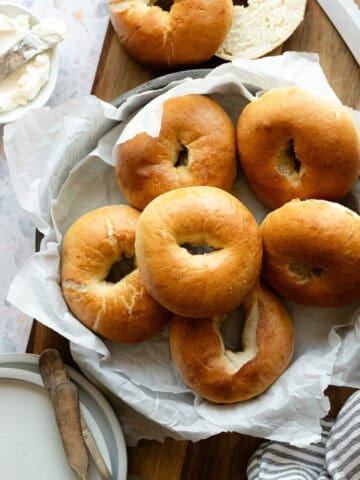
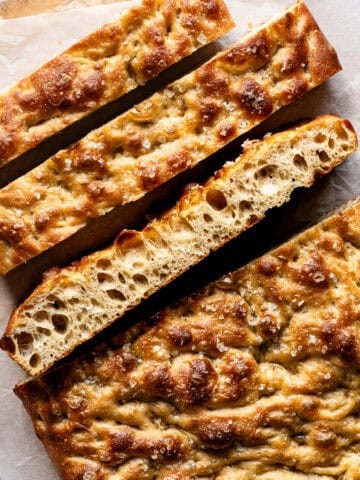

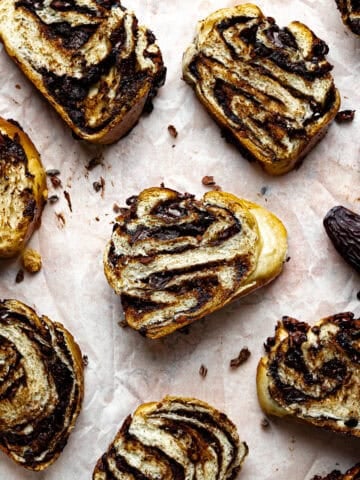
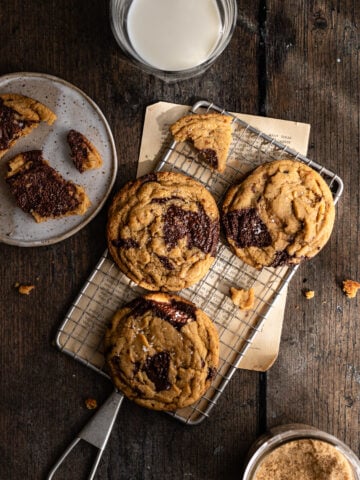
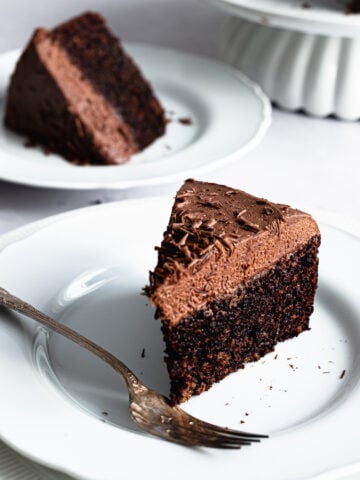
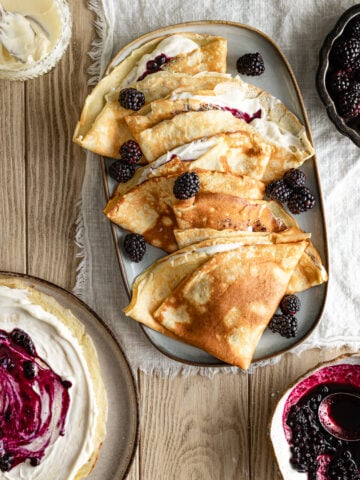

Kylie says
Perfection. Thanks for the recipe and tips Hannah. Your discard crepes are also very, very good 🙂
Hannah Dela Cruz says
So glad you love the recipes, Kylie!